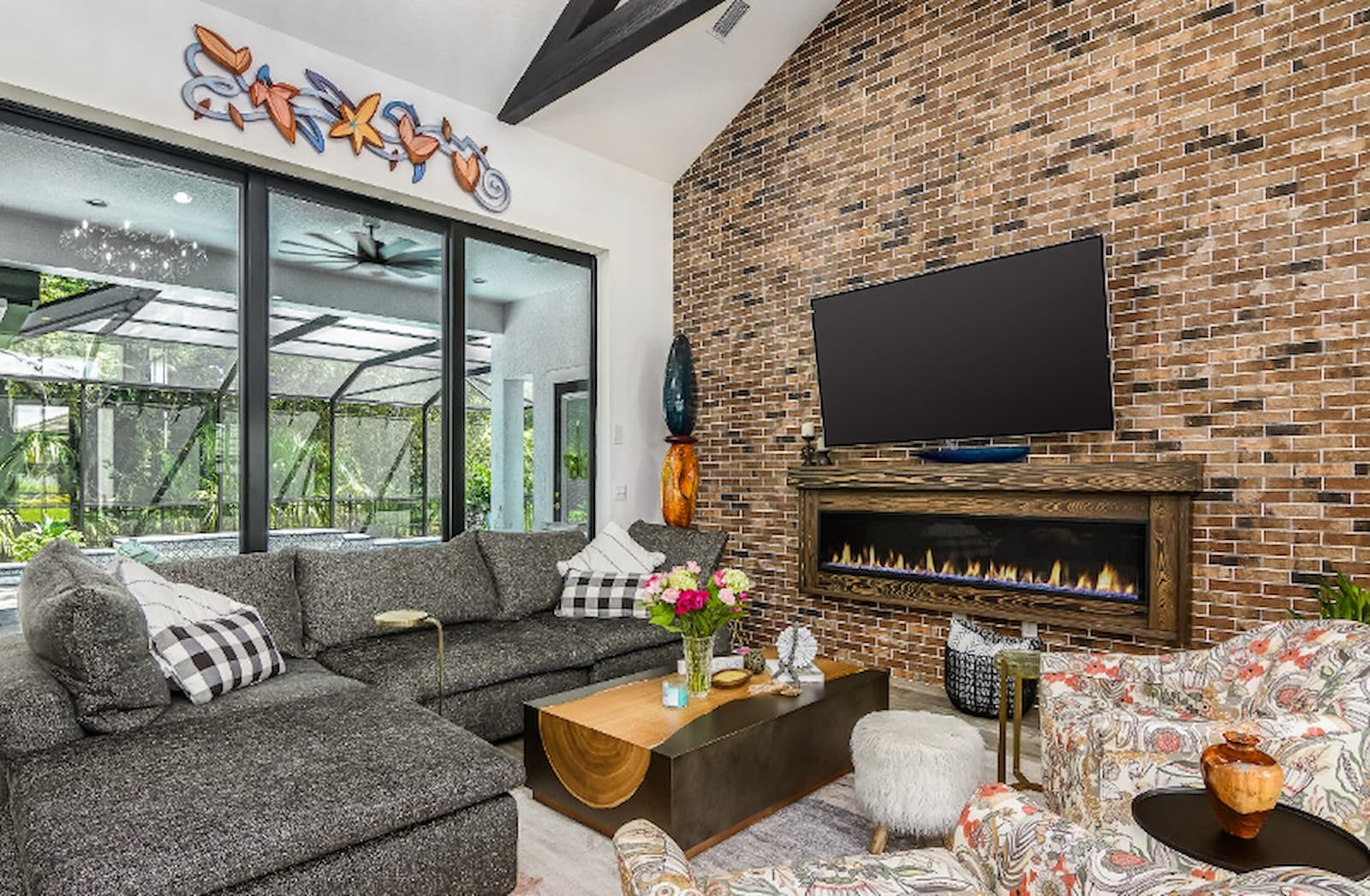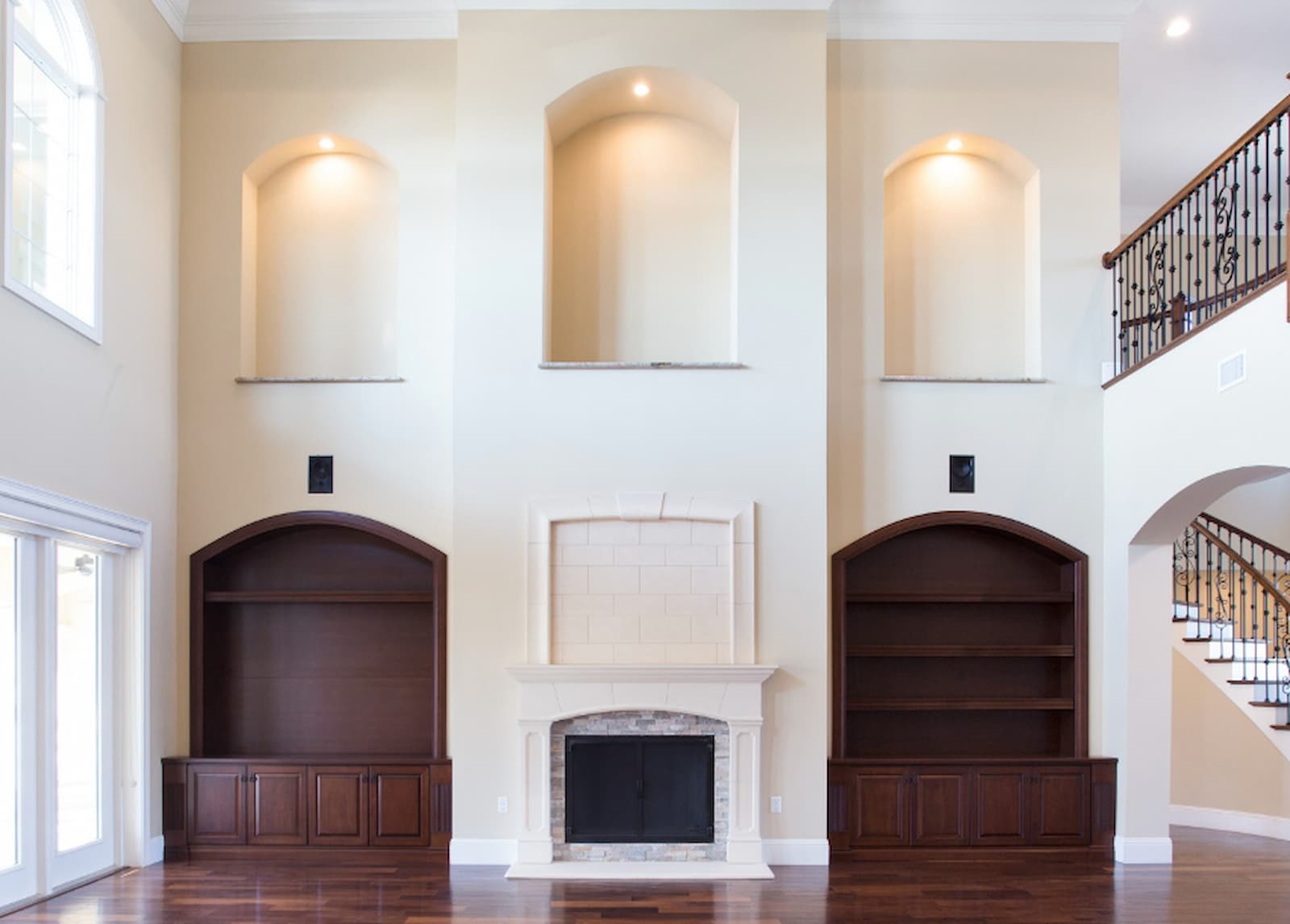Keeping Your Home Warm During a Florida Winter
Florida isn’t known for frigid winters, especially here on the Space Coast. Most days are warm, breezy, and sunny, which is exactly why so many people choose to live in Brevard County. But each year, we still see a handful of cold fronts that bring overnight temperature drops and a few chilly mornings. And in North Florida, winter can feel surprisingly brisk.
Whether you’re building a new custom home or updating an existing one, there are several smart ways to keep your house comfortable during those cooler stretches without sacrificing energy efficiency. Below, we’ll walk through some of the best options, based on what we install in our own custom homes throughout Melbourne, Satellite Beach, Indialantic, Cocoa Beach, Titusville, and the surrounding area.
1. Insulation: The Foundation of Winter Comfort
Even in a warm climate, insulation plays a major role in keeping indoor temperatures consistent. The right insulation helps regulate heat transfer year-round, meaning your home stays cooler in summer and warmer in winter.
Blown-In Insulation (Most Budget-Friendly)
Blown-in insulation is one of the most common options in Florida. It’s cost-effective, quick to install, and provides good overall coverage in attic spaces, the area responsible for most of the heat loss.
Batt Insulation (Mid-Range Option)
Batts offer more structure and can be a good fit for specific areas of the home. The price falls in the middle, and performance is reliable when installed properly. It’s even possible to install blown-in insulation over the top of batts to avoid heat transfer through the bottom chords of the trusses, where the batts are installed.
Open-Cell Spray Foam (Most Expensive — With Florida-Specific Considerations)
Open-cell foam creates an air-tight envelope that greatly reduces heat transfer. It’s the most expensive option, but also the most effective. However, Florida’s humidity introduces a unique concern: moisture can sometimes breach the foam envelope if not detailed perfectly. This is why careful evaluation is important, especially in homes close to the coast.
Block Foam Injection (Installed During Construction)
For concrete block homes, which make up a large portion of new construction in Brevard County, block foam insulation is injected into the block cavities after electrical rough-in. This helps reduce heat transfer through the masonry and improves overall comfort in both warm and cool weather.
2. Argon Gas in Windows: Not a Must-Have in Florida
Argon gas is a popular upgrade in northern states, where homeowners want to retain heat through long winters. However, our window suppliers consistently tell us that Argon offers minimal benefit in Florida’s climate. It doesn’t hurt to have it, but it’s rarely a critical upgrade. Here on the Space Coast, low-E coatings and high-quality frames matter far more for comfort and energy efficiency. Argon is also known to slowly leak over time, reducing its effectiveness.
3. Heating Systems: Heat Pumps vs. Gas Furnaces
Heat Pumps (Most Common in Florida)
Heat pumps are the standard in our area. They excel at cooling in the summer and can reverse to provide heat in winter. On very cold days, built-in electric heat strips assist the system. For most homeowners in Brevard County, a heat pump offers plenty of heating capability even during a strong cold front.
Gas Furnaces (Where Natural Gas Is Available)
In neighborhoods with natural gas access, some homeowners prefer a traditional gas furnace paired with a standard AC system. Gas offers strong, immediate heat and is ideal for those who prefer a more “toasty” indoor feel.
4. Smart Thermostats & HVAC Zoning
Modern heating comfort doesn’t stop with the equipment — it also depends on how you control it.
Smart Thermostats
Systems like Nest and Ecobee learn your habits, adjust temperatures automatically, and help reduce energy waste. They’re especially helpful during the sporadic nature of Florida’s cold days.
Zoning
Larger custom homes benefit from HVAC zoning, which allows different areas of the home to be set at different temperatures. This prevents cold or warm pockets and ensures consistent comfort throughout.
5. Ductwork: R6 vs. R8 (Why It Matters in Florida)
Duct insulation is often overlooked, but it makes a significant impact.
- R6 Ductwork: Standard insulation level used in many homes.
- R8 Ductwork: A worthwhile upgrade, especially in attics where large temperature swings occur. R8 ducts reduce heat loss, improve system performance, and help keep conditioned air where it belongs — especially during chilly mornings.
6. Flooring: Tile Is Best for Florida, But Can Feel Cool in Winter
Here in coastal Florida, tile is still one of the best flooring options. It’s durable, easy to maintain, and simple to repair if damaged. It also holds up extremely well against humidity and sandy feet from the beach. The tradeoff? Tile can feel chilly during a cold front. A simple, inexpensive solution is layering area rugs in main living spaces and bedrooms. This adds warmth, comfort, and the ability to easily swap styles as trends change.
7. Fireplaces: A Popular Centerpiece in Florida Homes
Even though we live in a warm state, fireplaces remain incredibly popular — particularly in the custom homes we build. About a fifth of our clients choose to include one as a focal point of their living area.
Gas Fireplaces
If the home has access to natural gas, gas fireplaces offer beautiful ambiance and quick, controllable heat.
Electric Fireplaces
Electric models are versatile, easy to install, and work anywhere. They’re often chosen for aesthetics, atmosphere, and year-round usability (many models let you run the flame display without heat).

Keeping Your Florida Home Comfortable Year-Round
While winters on the Space Coast are mild, the right combination of insulation, HVAC design, upgraded ductwork, and smart home technology can make a notable difference in comfort without inflating your energy bills. As a Brevard County custom home builder, we help our clients choose the best combination of materials and systems for their lifestyle, budget, and long-term efficiency. Whether you’re building a new custom home or remodeling an existing one, we’re here to guide you through every decision.


